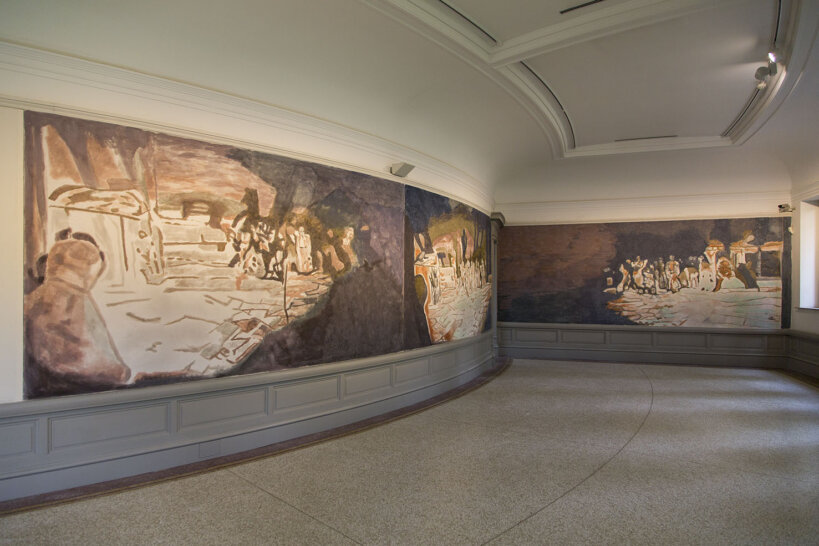The Arena: a work with history
For this fresco, Tuymans returns to 'The Arena', a work from 1978. At the centre of the image is a theatrical scene that is difficult to discern, consisting of a vaguely painted background and a photo collage of unrecognisable figures. On the left, we see a silhouette looking at the image as if it were a projection.
After his art training Luc Tuymans studied art history in the years 1982-1985. During this period he experimented exclusively with film. At the time he made a diorama of The Arena, which he used to realise a film in super 8. In 2014, stills from this film were used to create a sequence of six large-scale paintings. He used these as the basis for the fresco.
Cinematography in plaster
To further enhance the cinematic effect, Tuymans chose a long convex wall and an end wall for his fresco. This creates the illusion that the images are passing us by in cinemascope. In the three frescoes, we see the same scene from a different angle.
The strong light-dark contrasts, which were originally the result of the spotlight mounted on the camera, here refer to the dramatic light in Francisco Goya's black paintings. The double meaning of the title - an arena is both a battleground and a stage scene - emphasises the ambiguous position of the spectator, a position that depends on the desire that animates his view.
A fresco?
A fresco is a wall painting that is created on a fresh and still wet layer of plaster. The centimetre-thick layer is applied to the bare brick. It must be stable, dry, free of rising damp and exposed to the air for a considerable time. The wall must be wetted several times to ensure a good bond with the fresco.
In the 15th century, the drawing was engraved by means of a board with an engraving needle. Today this is done by projection. While the plaster dries, the pigments are absorbed. Painting has to be done quickly, because plaster dries in one day. As the plaster dries, the colours become lighter.
